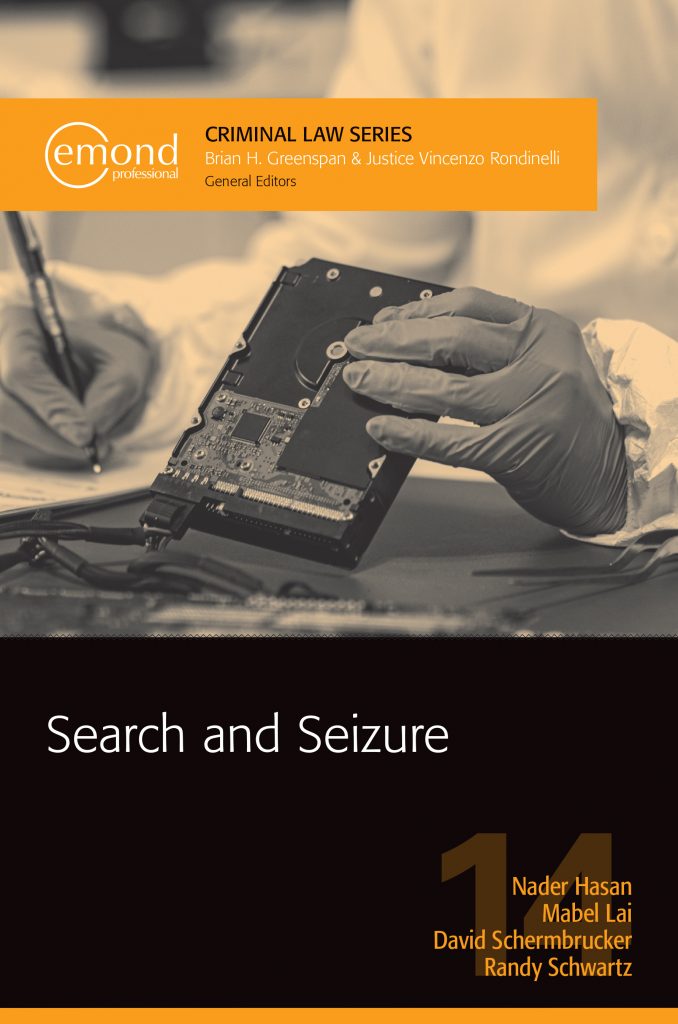
Authors: Nader Hasan, Mabel Lai, David Schermbrucker, Randy Schwartz
General Editors: Brian H. Greenspan and Justice Vincenzo Rondinelli
ISBN: 978-1-77255-635-3
Section 487 of the Criminal Code was once followed by section 488. Today, these sections are separated by more than 40 provisions, a mix of digits and decimals. As courts have identified new warrant requirements (situations where police need prior judicial authorization to act), Parliament has obliged by creating new warrants. The amendments, while necessary, were introduced in a reactive and ad hoc fashion. The law has not so much developed as it has accumulated. As a result, the Code contains a labyrinth of specialized warrant provisions, each with its own requirements and limitations. How do investigators choose from the array of options? This is challenging terrain. It helps to have a field guide.
Search and Seizure, from Emond Publishing, is the perfect navigational resource for both the legal novitiate and the seasoned traveler. Authored by four criminal law specialists with expertise in search and seizure, the text is a concise yet comprehensive tool for investigators. While the bulk of the content concerns warrants and other orders, there is a discussion of warrantless search powers, foundational concepts and exclusion of evidence under section 24(2) of the Charter. In essence, the text takes the reader through the process—from the initial drafting of documents to judicial rulings at trial. It will appeal to those seeking general knowledge while satisfying those who need a razor-sharp answer to a narrow question.
One of the key features of the text is its treatment of warrants, wiretaps and a variety of other tools used in crime investigation. This includes relatively new orders relating to electronic evidence. In setting out the nuts and bolts of the application process, Search and Seizure dispels much of the mystique for police, practitioners and decision-makers.
Chapter 5 is a detailed primer on production orders as well as preservation demands and orders. These tools, though highly technical, have become increasingly important in the current “data-driven technological age” (p. 136). Other chapters offer a detailed analysis of the various warrant provisions such as the traditional section 487 warrant (Chapter 4), the general warrant under section 487.01 (Chapter 6) and wiretap authorizations (Chapter 14). Some chapters focus on special contexts such as computer searches (Chapter 10), special locations (Chapter 13) and regulatory searches (Chapter 8). Others cover manner of execution (Chapter 12) and post-execution procedures (Chapter 15). Chapter 17 is a concise but thorough primer on the exclusion of evidence.
The law of search and seizure is fluid and dynamic. It must keep pace with an ever-expanding digital universe. Search and Seizure is not only a guide to the here and now. It will help chart a path through the uncertain terrain of the future. With its principled analysis, practical wisdom and a hands-on, how-to format, it is a must-read for anyone involved in the enforcement and administration of criminal justice.
– Ontario Superior Court Justice Renee Pomerance
Print this page
 Author: Nader Hasan
Author: Nader Hasan